Theodore Sougiannis is an American economist, currently the KPMG Distinguished Professor of Accountancy at Gies College of Business, University of Illinois. [1]
Theodore Sougiannis is an American economist, currently the KPMG Distinguished Professor of Accountancy at Gies College of Business, University of Illinois. [1]

Theodore Roosevelt Jr., often referred to as Teddy or his initials T. R., was an American politician, statesman, conservationist, naturalist, historian, and writer who served as the 26th president of the United States from 1901 to 1909. He previously served as the 25th vice president under William McKinley from March to September 1901, and as the 33rd governor of New York from 1899 to 1900. Having assumed the presidency after McKinley's assassination, Roosevelt emerged as a leader of the Republican Party and became a driving force for anti-trust and Progressive policies.

The American Legion, commonly known as the Legion, is a non-profit organization of U.S. war veterans headquartered in Indianapolis, Indiana. It is made up of state, U.S. territory, and overseas departments, and these are in turn made up of local posts. The organization was formed on March 15, 1919, in Paris, France, by a thousand officers and men of the American Expeditionary Forces, and it was chartered on September 16, 1919, by the United States Congress.
Roosevelt High School may refer to:
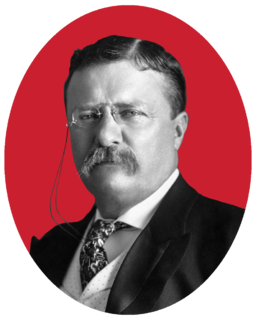
The 1904 Republican National Convention was held in the Chicago Coliseum, Chicago, Cook County, Illinois, on June 21 to June 23, 1904.
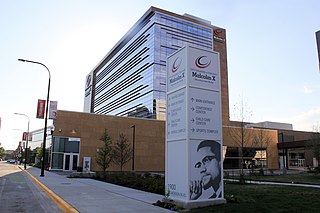
Malcolm X College, one of the City Colleges of Chicago, is a two-year college located on the Near West Side of Chicago, Illinois. It was founded as Crane Junior College in 1911 and was the first of the City Colleges. Crane ceased operations at the beginning of the Great Depression and was reopened in as Theodore Herzl Junior College, located in the North Lawndale neighborhood on Chicago's West Side in 1934. Needing a new campus in the late 1960s, Herzel's building was changed into an elementary school. In 1969, the school was named in honor of civil rights advocate and orator Malcolm X on its move to a new campus in the Near West Side.
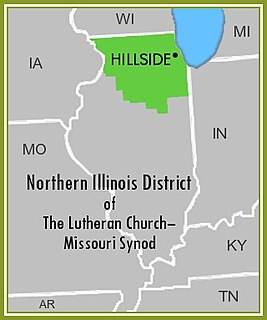
The Northern Illinois District is one of the 35 districts of the Lutheran Church–Missouri Synod (LCMS), and covers the northern third of the state of Illinois, including the Chicago metropolitan area; the rest of the state is divided between the Central Illinois District and the Southern Illinois District. In addition, 26 congregations in the Chicago area are in the non-geographic English District, and five congregations in northern Illinois are in the SELC District. The Northern Illinois District includes approximately 226 congregations and missions, subdivided into 28 circuits, as well as 54 preschools, 67 elementary schools and 9 high schools. The district has approximately 127,000baptized members.
Illinois's first congressional district is a congressional district in the U.S. state of Illinois. Based in Cook County, the district includes much of the South Side of Chicago, and continues southwest to Joliet.

Theodore C. Link, FAIA, was a German-born American architect and newspaper publisher. He designed buildings for the 1904 World's Fair, Louisiana State University, and the Mississippi State Capitol.
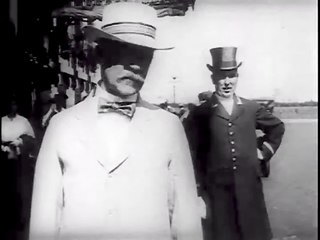
The 1916 Republican National Convention was held in Chicago from June 7 to June 10. A major goal of the party's bosses at the convention was to heal the bitter split within the party that had occurred in the 1912 presidential campaign. In that year, Theodore Roosevelt bolted the GOP and formed his own political party, the Progressive Party, which contained most of the GOP's liberals. William Howard Taft, the incumbent president, won the nomination of the regular Republican Party. This split in the GOP ranks divided the Republican vote and led to the election of Democrat Woodrow Wilson. Although several candidates were openly competing for the 1916 nomination—most prominently conservative Senator Elihu Root of New York, Senator John W. Weeks of Massachusetts, and liberal Senator Albert Cummins of Iowa—the party's bosses wanted a moderate who would be acceptable to all factions of the party. They turned to Supreme Court Justice Charles Evans Hughes, who had served on the court since 1910 and thus had the advantage of not having publicly spoken about political issues in six years. Although he had not sought the nomination, Hughes made it known that he would not turn it down; he won the presidential nomination on the third ballot. Former Vice President Charles W. Fairbanks was nominated as his running mate. Hughes is the only Supreme Court Justice to be nominated for president by a major political party. Fairbanks is the last former vice president, to be nominated for vice president.
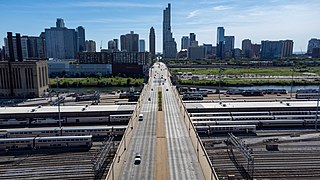
Roosevelt Road is a major east-west street in the city of Chicago, Illinois, and its western suburbs. It is 1200 South in the city's street numbering system, but only 1 mile (1.6 km) south of Madison Street. It runs under this name from Columbus Drive to the western city limits, then continues through the western suburbs including Lombard, Wheaton and, West Chicago until it reaches Geneva, where it is known as State Street. 12th Street was renamed to Roosevelt Road on May 25, 1919, in recognition of President Theodore Roosevelt, who had died the previous January. In 1928 the new U.S. Route 330 (US 330), a different alignment of US 30, went down Roosevelt Road to Geneva, in 1942 it was redesignated as US 30 Alternate. In 1972, after the route had been discontinued, Roosevelt Road outside Chicago became Illinois Route 38.
Texico is an unincorporated community in Jefferson County, Illinois, United States. The population was 851 at the 2010 census.
Haitian emigration was a movement to describe the emigration of free blacks from the United States to settle in Haiti in the early 19th century.
"The Strenuous Life" is the name of a speech given by New York Governor Theodore Roosevelt in Chicago, Illinois, on April 10, 1899. Based upon his personal experiences, he argued that strenuous effort and overcoming hardship were ideals to be embraced by Americans for the betterment of the nation and the world in the 20th century.

New Gračanica Monastery is a Serbian Orthodox monastery complex is located in Third Lake, Illinois, United States, a suburb of Chicago. The complex houses a scaled-up replica of the Gračanica monastery in Kosovo. It is a part of the Diocese of New Gracanica - Midwestern America. It has 300 acres of land, making it the 6th largest monastery among the 80 American Orthodox Christian monasteries.
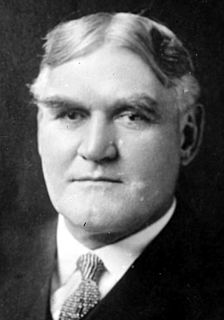
From March 7 to June 6, voters of the Republican Party chose its nominee for President of the United States in the 1916 U.S. presidential election. The nominee was selected through a series of primary elections and caucuses culminating in the 1916 Republican National Convention held from June 7 to June 10, 1916, in Chicago, Illinois.

The 1912 United States presidential election in Illinois took place on November 5, 1912, as part of the 1912 United States presidential election. State voters chose 29 representatives, or electors, to the Electoral College, who voted for president and vice president.
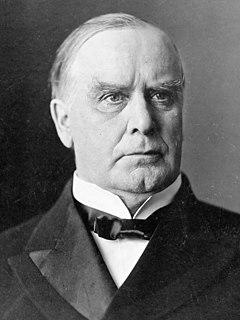
The 1900 United States presidential election in Illinois took place on November 6, 1900. All contemporary 45 states were part of the 1900 United States presidential election. State voters chose 24 electors to the Electoral College, which selected the president and vice president.

The 1904 United States presidential election in Illinois took place on November 8, 1904. All contemporary 45 states were part of the 1904 United States presidential election. State voters chose 27 electors to the Electoral College, which selected the president and vice president.

The 1928 Illinois lieutenant gubernatorial election was held on November 6, 1928. Incumbent Republican liuetenant governor Fred E. Sterling was reelected to a third consecutive term.

The 1932 Illinois gubernatorial election was held on November 8, 1932. It saw the election of Democrat Thomas Donavan, who defeated incumbent Republican liuetenant governor Fred E. Sterling.